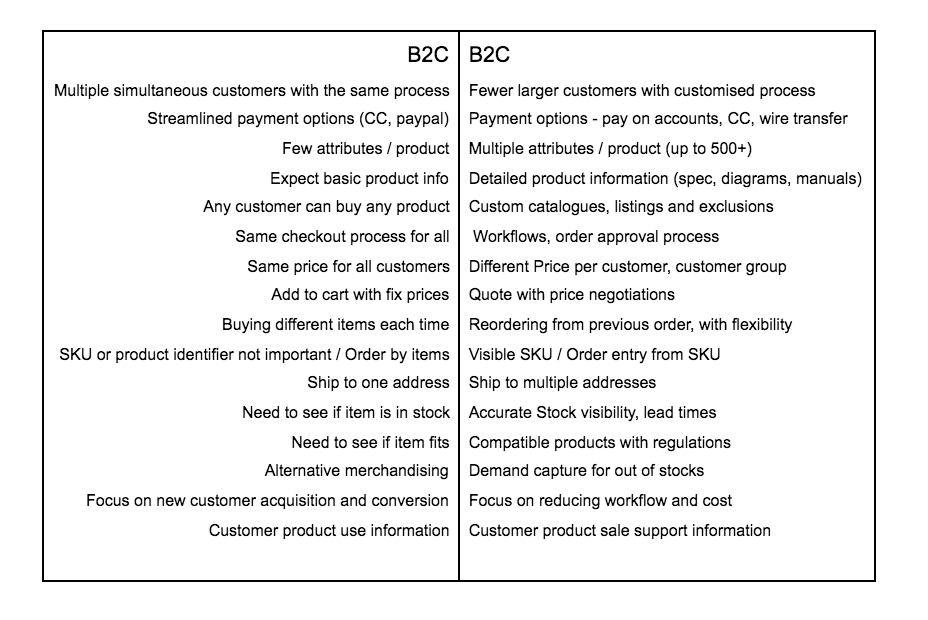Moving from a B2C Mindset: Building for Success in B2B Ecommerce
In a blog written by our Head of Magento, Gabriel, last week he stated that “While in B2C, high page load speeds result in reduced conversions and therefore sales; in B2B it will frustrate customers who need to regularly re-order, increase churn with customers reverting to traditional offline methods of ordering, increasing cost and potentially result in lost contracts which ultimately result in customers moving to other providers who have a better digital offering.” This point emphasises the point I’d like to make this week.
Understanding that there are key points of difference specific to B2B ecommerce is important. While B2C commerce principles and its advancement has no doubt impacted on how B2B platforms are designed and developed, nowadays comparing B2C and B2B digital commerce is an ‘apples to oranges’ type of methodology. This is illustrated by features and functionality such as user permissions, re-ordering, advanced account dashboards all of which are designed to create loyalty in repeat account customers. Below I’ve outlined some of the fundamental differences in the expectations and the contextual features that need to be considered when delivering a digital platform capable of managing B2B commerce v’s the ‘traditional’ view of consumer driven digital commerce.

Modern B2B Ecommerce platforms are designed to follow core consumer journeys. This is in part because almost all widely used Ecommerce platforms that originated in the last 20 years were designed with consumer purchasing in mind. When we talk to prospective B2B clients who are already offering their customers online ordering, that platform tends to fall into 2 catagories.
A bespoke, customised piece of software, more often than not built in-house acting as a frontend to their ERP, thus sacrificing user experience and with limited commerce functionality
A standalone platform with standard B2C ecommerce features but is very poorly integrated into their ERP, requiring manual overhead to fulfil orders and resulting little or no useful customer information being exposed in a my account dashboard thus inhibiting the opportunity for self-service.
It sounds obvious, but delivering on B2B customer expectations in a B2B ecommerce environment is fundamental to the successful on-boarding of customers to your digital platform. Failure to understand specific customer context and solve customer pain points will not illicit the required change in behaviour from previous ordering methods, whether they be email, order forms, inbound phone calls or outbound sales calls.
In our next blog, Ross McHugh looks how businesses can address both B2B and B2C customers by unifying these distinct purchase behaviours in a single platform.




